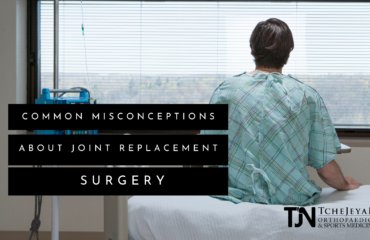How Long Does Total Knee Replacement Take?
If debilitating arthritis or a serious knee injury has left you in pain and struggling to complete basic actions such as rising from a seated position or climbing stairs, your doctor may recommend a total knee replacement as a solution. In most cases, total replacement is usually a last resort, after a patient has ceased responding to less invasive methods, such as using over-the-counter pain and inflammation medications, undergoing physical therapy, using braces or other supportive devices, and often after trying corticosteroid injections.
Today, total knee replacement is a fairly common procedure. The average knee replacement surgery takes anywhere from one to three hours to complete and is often performed as an outpatient procedure. Knee replacement is done using traditional surgical techniques – that is, by opening up the knee completely, rather than using minimally invasive techniques. During the replacement, your surgeon will take the injured or damaged bone and cartilage out of the joint. Then, the surgeon will position the new knee implant.
There are several different designs of prosthetic knee joints, but they operate in similar ways. A typical implant involves affixing a metal casing over the end of the femur (thigh bone). A plastic and metal cup with a metal stem extending from it will be fitted to the tibia (shin bone). The metal stem fits into the metal casing on the femur with a type of hinge to create an artificial knee joint. Thanks to decades of research, today’s prosthetic devices are very advanced and robust, and will allow patients to regain their previous mobility and strength. Most of these devices can last 20 years or more.
Candidates for Knee Replacement
Many people are understandably reluctant to undergo surgery, even though they may need it. Despite the inconvenience posed by a bad knee, the inconvenience of having to schedule surgery and subsequent physical therapy can make people delay treatment.
But most people who finally undergo knee replacement surgery after putting it off end up “kicking themselves” for not doing it sooner. The fact is, if you are dealing with serious knee pain and mobility issues, chances are that you are becoming less active and less fit, and not enjoying the activities you used to enjoy. The sooner you undergo knee replacement, the sooner you can begin resuming your favorite activities. If you let yourself become more sedentary and out of shape, the longer it will take to go through rehabilitation and to restore your former level of fitness following surgery.
If you have one or more of the following issues, your doctor may suggest a total replacement as the best solution to your pain and mobility issues:
- Severe stiffness or pain that prevents you from participating in your daily life
- Moderate to severe pain even when at rest
- Chronic inflammation in the affected joint that does not improve with medication or rest
- Knee deformity that causes pain or negatively impacts your quality of life
- Pain that is not eased by medications, lubrication treatments, physical therapy, minor surgery, or any other therapies
Recovery
How quickly you recover from your joint replacement surgery depends on multiple factors. Your overall health and the amount of muscle mass you have will impact your recovery. Patients who were active before the procedure can usually return to their normal activities relatively soon. Most patients will have full joint motion within six to eight weeks following the replacement, and mobility will continue to improve for several months.
By three months post-surgery, most patients will walk and complete low-intensity movements with minimal discomfort. Patients can expect to regain full movement and function without pain in six to twelve months. However, depending upon the situation, your surgeon may advise you to refrain from high-impact exercises indefinitely to prevent premature deterioration of the artificial joint.
Physical Therapy
Completing physical therapy is necessary for most patients to restore their desired range of motion. During physical therapy, patients will perform exercises to strengthen weak muscles and to stretch tendons and muscles. Once you are comfortable with the movements, you will continue them on your own as your doctor or therapist instructs. Following your doctor’s guidelines is critical to getting the most out of your recovery.
The American Academy of Orthopedic Surgeons has found that over 90% of contemporary knee joint replacements remain fully functioning at least 15 years after surgery. Individuals who need an alternative to non-invasive options for relieving knee pain may find knee replacement provides them with the relief they need. Contact Tchejeyan Orthopaedics and Sports Medicine today to schedule an appointment to address your joint pain.




